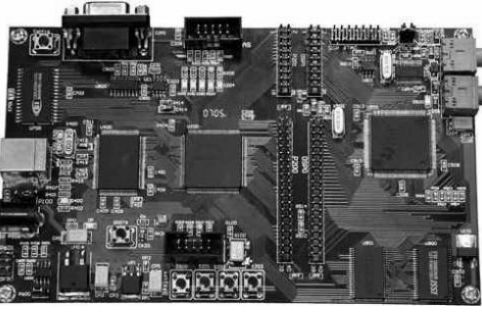The advantages of FPGAs are consistent with the mainstream demand of automotive electronics.
Analysts estimate that the total revenue of automotive telecommunications services and hardware will exceed $20 billion over the next five years, and electronic component suppliers are actively investing in the development of this new and rapidly expanding market. In general, automotive electronics is expected to become a bright spot in the semiconductor industry, leading the entire industry out of the bottom. Think about the total number of cars driving on the road today, you know that the market potential of automotive electronics is really amazing, and the new generation of automotive electronics has a huge space for development. As automakers integrate a variety of innovative passenger safety, comfort, information and telematics equipment, component suppliers are turning the industry's design challenges into opportunities to generate significant revenue.

The advantages of FPGAs and the mainstream demand for automotive electronics are beginning to coincide, enabling designers to use FPGAs to provide flexible solutions that meet consumer demand for all aspects of the latest automotive electronics functions, including security, passenger comfort, information and remote information, processing and so on.
Automotive electronics engineers have traditionally used microcontrollers, custom ASICs, and bulky wire harnesses to introduce and control electronic systems, and to expand functionality as cars evolve. However, as the number of components continues to increase (about 20 microcontrollers in a typical car three years ago, 40 to 60 now), increasing time-to-market pressures, and increasing performance requirements have prompted new types of The emergence of technology.
User-customizable logic is the ideal solution
For example, many automotive designers are considering the use of in-cab network systems for more efficient in-vehicle communication and control function management. However, moving the in-cab electronic system to the bus means facing emerging standards that are constantly evolving and changing. FPGAs are flexible, low-cost solutions for bridging between components or as bonding logic for a variety of custom functions. Because FPGAs are standard products, programmable logic devices also eliminate the need to retire most dedicated custom circuits.
For user-customized logic devices such as FPGAs, one of the fastest growing applications is as a standardized development platform that can scale to meet the needs of different customers. This makes FPGAs an important tool for accelerating time-to-market. A system with the same components offers a variety of options for every customer who buys a car.
With the same FPGA build application, some features can be easily started or not, and the FPGA can be programmed to start or not activate any of a series of functions.
However, the use of FPGA technology is very important, because it should have the immunity to prevent external tampering, can prevent the car from being hacked after the sale, and try to activate some functions that should be dormant.
Tamper-proof technology
Car hackers often improve the performance of their cars by adjusting various automotive electronics products, often breaking regional or national safety and environmental standards. These unapproved services are provided in multiple ways and are therefore difficult to control. Many hackers modify the fuel delivery, electronic ignition time, and other control functions by changing the general set-up criteria for various in-vehicle system components to enhance the performance of the car. These changes usually cause the car to travel in violation of the manufacturer's use and warranty. Moreover, hackers can also provide options to reset the relevant factory settings, and then restore the damaged and over-reported car to the manufacturer's warranty conditions in order to obtain a violation of the warranty service.
The security threats of FPGAs are also of particular concern to designers of telematics systems because they are used as an authorization mechanism for fee-based service products, such as satellite communications and location services. If the system that manages gateway access control and user authentication has security concerns, it can become a huge security hole in expensive satellite networks or other expensive wireless infrastructure. When low-cost applications are attacked by high intelligence, it is likely to cause damage to the entire communication network. More importantly, the revenue model of the pay-per-use system will be completely ineffective, causing the company's revenue to drop or even go bankrupt.
Obviously, choosing FPGA technology is extremely important to prevent system security from intrusion tampering. FPGA solutions range from very secure non-volatile Flash and anti-fuse architectures to unsafe volatile SRAM products that require power-up configurations. Industry experts generally believe that anti-fuse is the most secure FPGA architecture available.

